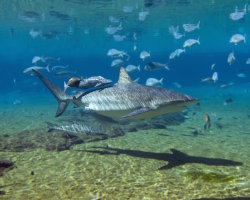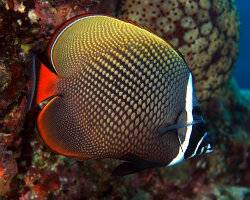Sealife guideThe north Pacific giant octopusEnteroctopus dofleini
Last updated on 03/10/2025 at 09:31 PM
Taxonomy
- Common name: North Pacific giant octopus, giant Pacific octopus, giant north pacific octopus
- French name: Poulpe géant du nord du Pacifique, pieuvre géante du nord du Pacifique, poulpe géant du Pacifique, pieuvre géante du Pacifique
- Spanish name: Pulpo gigante del Pacífico
- Scientific name: Enteroctopus dofleini (Wülker, 1910)
- Family name: Enteroctopodidae
- Order name: Octopoda
- Class name: The cephalopods [Cephalopoda]
Description
The north Pacific giant octopus can reach an exceptional size, with an average length of about 16.5 feet, measured between the tips of two tentacles and a weight ranging from 44 to 110 pounds. The largest individual ever observed reached a length of 30 feet and a weight of 595 pounds. Its body, often reddish or brown in color, is covered with pigment cells called chromatophores, which allow it to change color and blend into its environment.
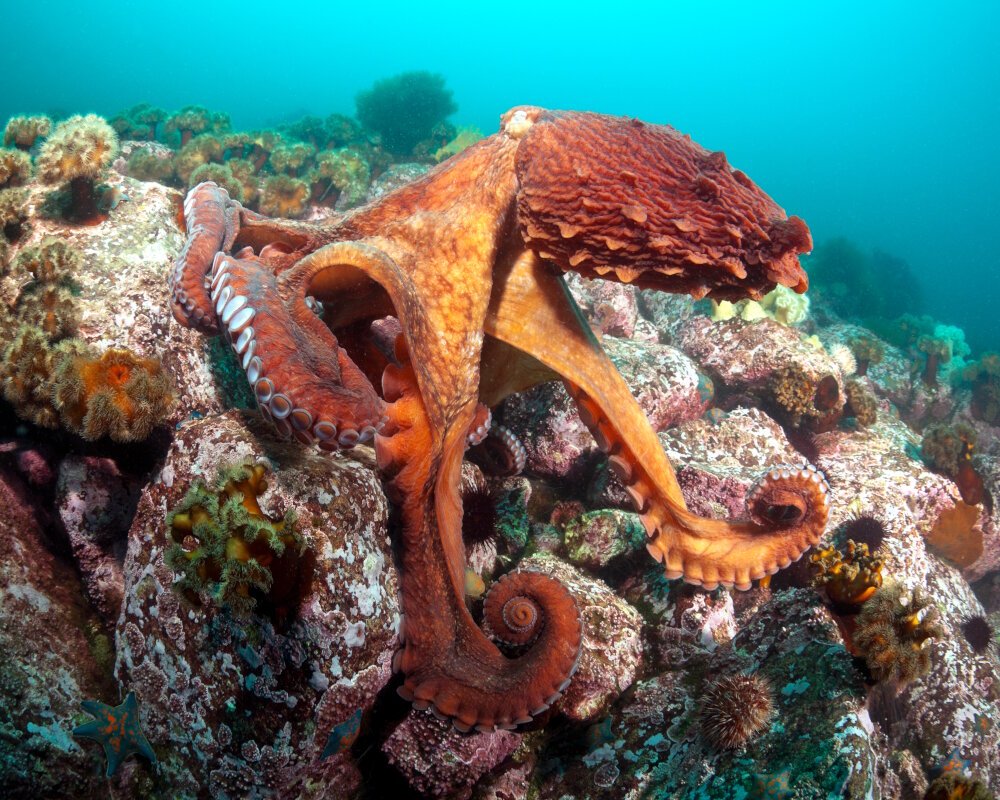
The north Pacific giant octopus (Enteroctopus dofleini)
The north Pacific giant octopus is one of the largest known cephalopods in the world.
Geographic range
The north Pacific giant octopus is found in the cold and temperate waters of the North Pacific Ocean, along the coasts of Alaska, British Columbia, the U.S. West Coast and the Sea of Japan.
Habitat
The north Pacific giant octopus is found in rocky seafloors where it can hide in crevices or underwater caves.
The north Pacific giant octopus generally inhabits depths between 0 and 328 feet, although it can descend much deeper, up to 4,921 feet in certain regions.
Diet
The north Pacific giant octopus is a nocturnal and carnivorous predator. It mainly feeds on fish, crabs, shrimp and shellfish. Thanks to its great intelligence and powerful tentacles, it is capable of capturing prey larger than itself. It also uses its suckers to manipulate objects, demonstrating one of its remarkable cognitive abilities.
To protect itself from its main predators, such as the wolf eel or the cod, the north Pacific giant octopus has the remarkable ability to squeeze into extremely narrow rocky crevices or adapt its color in just seconds according to its environment.
Reproduction
The north Pacific giant octopus has a unique reproductive cycle. After mating, the female searches for a rocky crevice, ideally twice her size, to lay her thousands of eggs on the ceiling and guard them until they hatch.
During this period, which lasts several months, the female does not leave her hiding place and stops feeding to stay with her eggs and protect them until they hatch. After the young are born, the female generally dies from malnutrition and exhaustion, a phenomenon known as semelparity, which is characteristic of many octopus species.
Did you know ?
The north Pacific giant octopus is also known for its ability to solve complex problems and use tools. Some studies have observed that this cephalopod is capable of escaping from cages and performing tasks that require memory and planning, which is often seen as an indicator of superior intelligence in animals.
The north Pacific giant octopus is also an important commercial resource. It is mainly caught using traps or cages and is used as bait and food. The largest individuals are also highly sought after for display in public aquariums.
Discover also
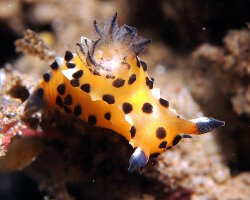
Abe's polycera nudibranch
(Polycera abei)
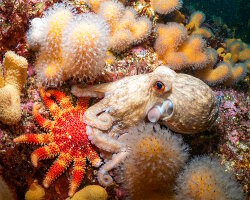
Curled octopus
(Eledone cirrhosa)
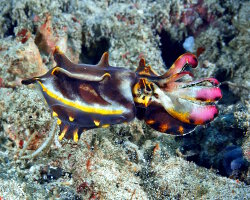
Flamboyant cuttlefish
(Metasepia pfefferi)
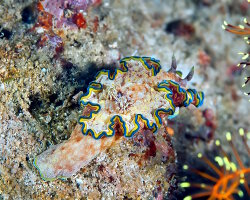
Glossodoris cincta nudibranch
(Glossodoris cincta)
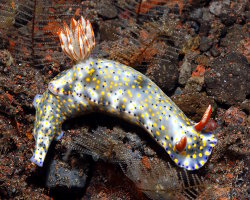
Kanga doris
(Hypselodoris kanga)
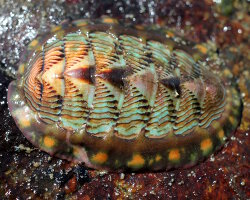
Lined chiton
(Tonicella lineata)
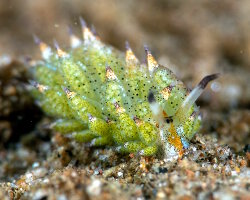
Little leaf sheep
(Costasiella kuroshimae)
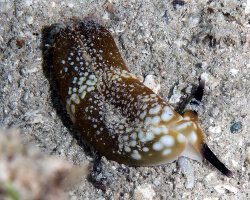
Ocellated sea slug
(Plakobranchus ocellatus)
The marine species

Banded guitarfish
(Zapteryx exasperata)
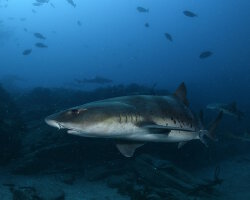
Banded houndshark
(Triakis scyllium)
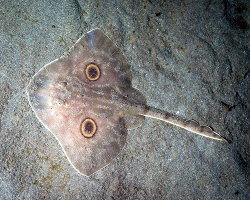
Big skate
(Raja binoculata)
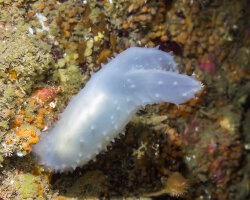
Glassy tunicate
(Ascidia paratropa)
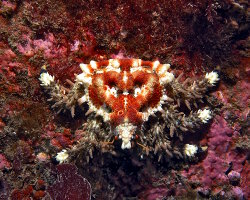
Heart crab
(Phyllolithodes papillosus)
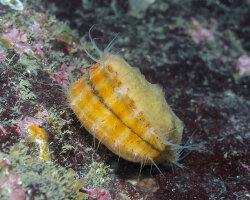
Spiny pink scallop
(Chlamys hastata)
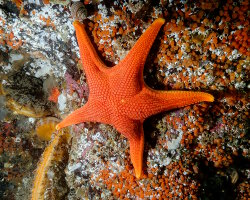
Vermillion sea star
(Mediaster aequalis)
Best dive destinations

A stop in Barcelona

A visit to the Getty Center

A walk down Ocean Drive

Alcatraz island
Dive centers

'Les Ilets' dive center
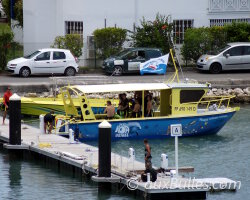
Noa dive center
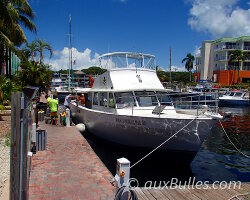
Sea Dwellers Dive Center

























